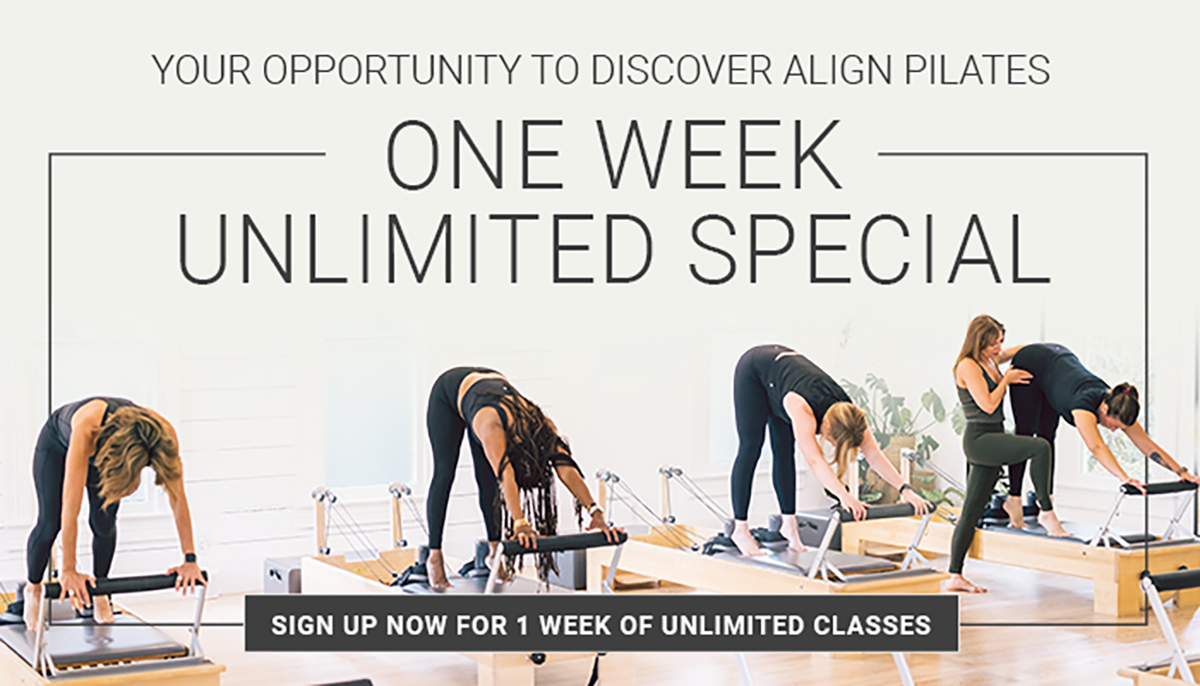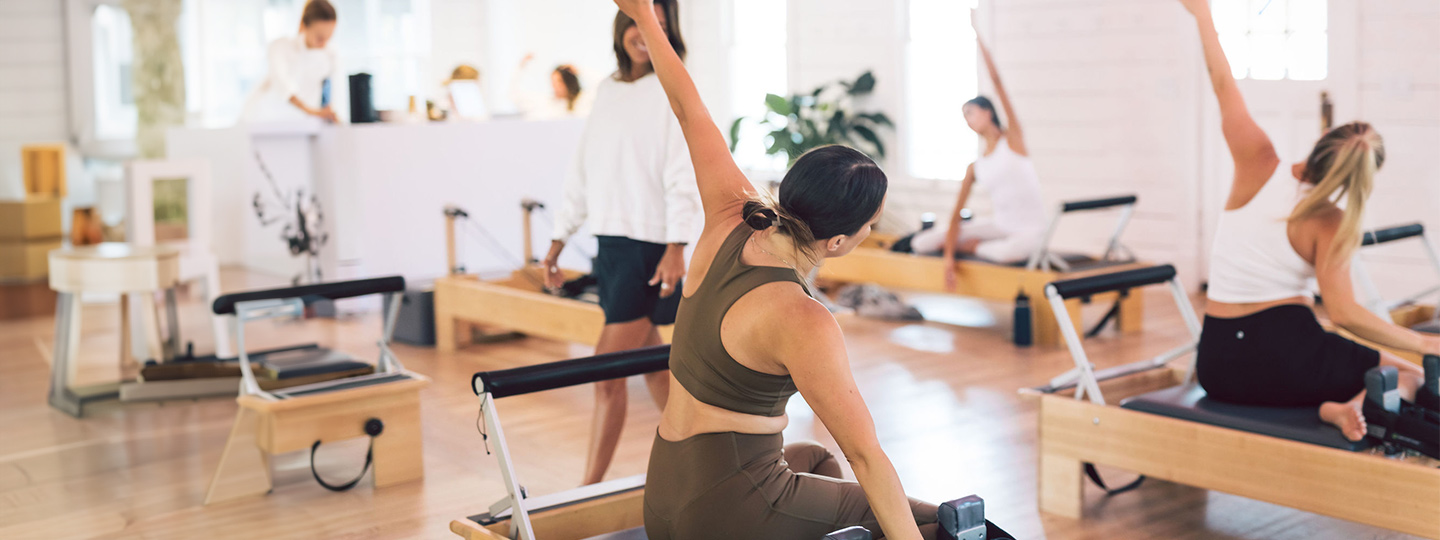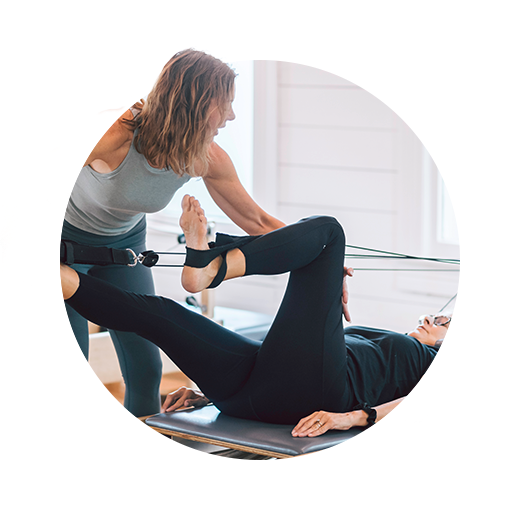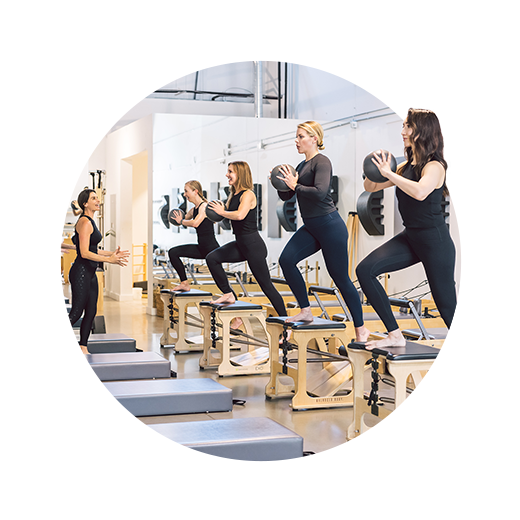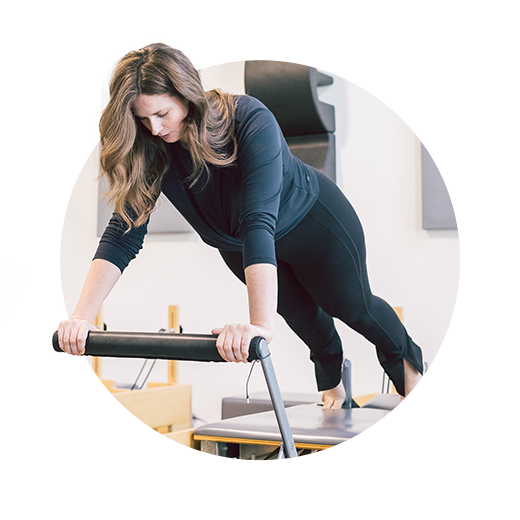What is Mat Pilates?
Joseph Pilates founded his world-renowned fitness modality on his path to bettering his own health. A sickly child who suffered from asthma and rickets, Joseph studied martial arts, yoga, gymnastics, and other forms of exercise to see what would help him become healthier and stronger. This quest along with his work rehabbing injured soldiers during WWI led him to create a fitness regimen that included 34 strengthening and flexibility exercises performed on the floor in a specific sequence. This is Mat Pilates.
Today, Pilates exists in many forms, but Mat was the first type of Pilates that Joseph and his students practiced. Later, Joseph would create several pieces of Pilates equipment, like the Reformer, to help people be able to do the Mat work. He went on to increase the intensity and variety of Pilates, but the mat is where it all began.
What exercises are included in mat Pilates?

During a traditional Mat Pilates class, you will do a series of exercises meant to strengthen the entire body. The 34 original exercises include the Hundred, the Roll Up, Corkscrew, Spine Stretch Forward, the Double Leg Stretch, and other exercises that work the core, back, hips, and legs.
Today, Mat Pilates classes vary in sequence, time, and exercises, but most will still include some, if not all, 34 original exercises. That is part of the beauty of Pilates. It has truly withstood the test of time. It still works!
“Mat classes are also a safe way to master the form of Pilates. In Pilates how you do an exercise is just as important as the exercise itself. Practicing on the mat before jumping on the Reformer will allow you to focus on that form first and foremost.”
Brooke Bowersock
Balanced Body Pilates Principal Educator
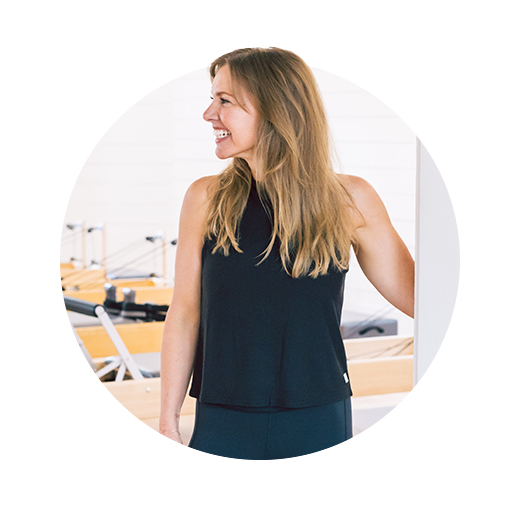
How is Mat Pilates different from Reformer Pilates?
At ALIGN Pilates Studios, we teach Reformer Pilates at our West location and all of the equipment classes at our East location. The Reformer is one of the many pieces of equipment created by Joseph Pilates. He invented the Reformer machine as a way to help people do the Mat work, and increase resistance and range of motion during traditional Pilates moves. While anyone can do a Reformer Pilates class, and we have beginner-friendly classes at ALIGN, most people start their Pilates journey on the Mat since that’s the most accessible type of class.
You can take a Mat Pilates class anywhere, whether in a studio, at your home, or while traveling because all you need for Mat Pilates is just that—a mat. Though you could even do it on the bare floor if that’s comfortable for you. While Mat Pilates often includes other pieces of equipment like grip socks, a Pilates ring or Pilates ball, these aren’t required. So doing a Mat class is a great—and affordable—entry point into the world of Pilates.
Just because Mat classes are good for beginners doesn’t mean they are easy. There are a lot of incredibly challenging Mat Pilates classes out there, so be prepared to work hard.
Mat classes are also a safe way to master the form of Pilates. In Pilates how you do an exercise is just as important as the exercise itself. Practicing on the mat before jumping on the Reformer will allow you to focus on that form first and foremost.
How do I know if mat Pilates is right for me?
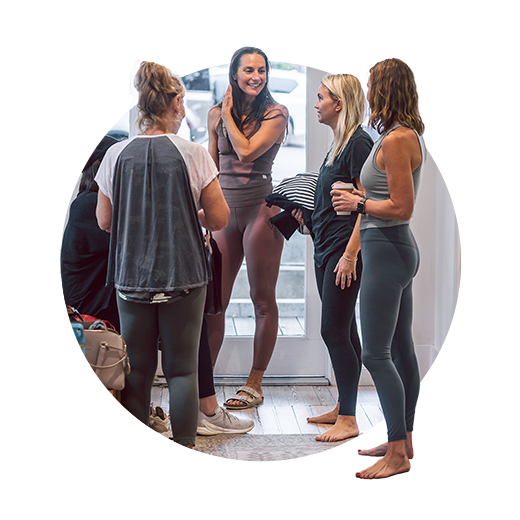
If you’re new to Pilates, have an injury, or you’re struggling with chronic back or hip pain, Mat Pilates is a perfect option for you. Pilates has been proven to:
Anyone can do Mat Pilates, no matter your fitness level, age, or health history. You can even practice Mat Pilates on a chair.

How can I take a Mat Pilates class?
Mat classes can be done anywhere anytime. YouTube offers free classes, an online subscription like Pilates Anytime or Peloton allows you to take quality Pilates classes from home, and there is likely a Pilates studio near you that teaches Mat classes.
For those pursuing Pilates teacher training, we provide an Online Mat Intensive that covers all three Mat modules. We also offer in-person Mat training at our ALIGN Pilates Studios East location.
When it comes to Pilates, you can’t go wrong. Reformer, Mat, in studio, at home—at ALIGN we want as many people as possible to participate in quality Pilates classes that will improve their health and lives. If that’s on the Reformer, great. If that’s at home on your mat, great. Do what your body needs most and what is most accessible for you and watch as this unique, century-old sequence of movements transforms your physical and emotional health.
ALIGN Pilates Studios West
ALIGN Pilates Studios East
ALIGN

